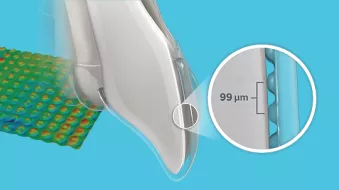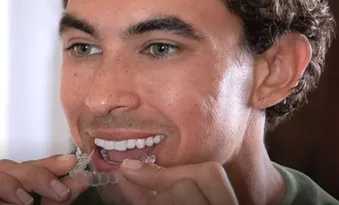Efficiency and Precision in Orthodontics: My Journey with Spark Clear Aligners

Background:
Navigating the ever-evolving field of orthodontics has been both an exhilarating journey and a rewarding challenge throughout my career. One of the most significant milestones in the history of orthodontics occurred in 1998 when clear aligner systems were approved as an alternative to traditional fixed appliances. It marked a paradigm shift, promising a more discreet and comfortable orthodontic treatment option for patients.
Clear aligners, when they first entered the scene, presented a unique set of challenges. They were less efficient than traditional braces and required orthodontists to adapt to a steep learning curve. However, as technology advanced, and with the continuous improvement of 3D software and materials, clear aligners began to offer a more viable solution for treating a wide range of malocclusions. Patients, driven by their desire for esthetic treatment options, increasingly favored them. Today, arguing against the growing use of clear aligners in orthodontics would be futile.
I had the privilege of collaborating with Ormco™ on the development and pilot testing of Spark™ Clear Aligners, an innovative clear aligner system. Spark utilizes TruGEN™ material, designed to provide improved sustained force retention for more efficient tooth movement. As an orthodontist who believes in the power of efficient mechanics with passive self-ligation, I embarked on this journey with two essential questions in mind: Can I achieve the same results with clear aligners, and can I do it in fewer appointments?
Efficiency in Orthodontic Treatment:
Before delving into my experience with Spark Clear Aligners, it's crucial to define what efficiency means in the context of orthodontic treatment. Efficiency, in this context, can be defined as the ability to achieve a beautiful smile and occlusion using the simplest mechanics possible, in the fewest number of appointments, and in the shortest amount of time. Achieving this level of efficiency hinges on several critical factors, starting with proper diagnosis and case setup and bolstered by a product that aligns with the orthodontist's treatment objectives.
The Role of Diagnosis:
A successful orthodontic treatment journey begins with an accurate diagnosis and a clear understanding of the treatment objectives. To illustrate this, let me share a case study:
Case Study: Diagnosis and Treatment Objectives
Patient Profile: A 31-year-old female presented with a chief complaint of crowding, bite issues, and dissatisfaction with the appearance of her smile. She had previously consulted a periodontist regarding recession on her lower 1's, who recommended orthodontic treatment to idealize her occlusion and reduce the risk of further recession. Clinical and radiographic examinations revealed a Class III skeletal and dental malocclusion with moderate maxillary crowding, mild mandibular crowding, and a full anterior crossbite.
Treatment Objectives: The treatment goals were as follows:
Eliminate maxillary and mandibular crowding.
Correct the anterior crossbite.
Improve lip support while maintaining incisor torque.
Eliminate the Class III malocclusion.
Align maxillary and mandibular midlines.
Enhance the smile arc and overall esthetics.
The treatment plan aimed to improve the smile by extruding the maxillary incisors while maintaining the vertical position of the posterior teeth and transverse dimensions.
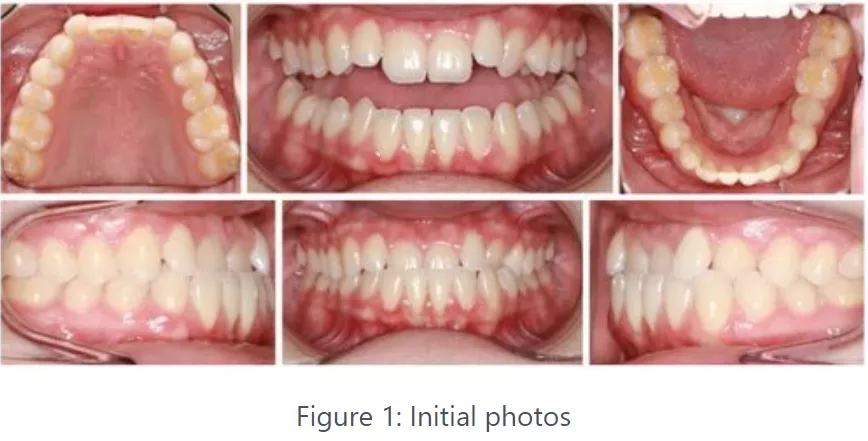

Treatment Design:
The treatment plan was meticulously designed using the advanced Approver™ software for Spark Clear Aligners. It included the following key elements:
Horizontal rectangular attachments for controlling posterior teeth.
Cutouts for elastics to aid in bite correction, including button cutouts on the facial of the lower 3's for Class III elastics and button cutouts on the palatal of the UL3 and LL34 for crossbite triangle elastics.
Lower aligners with lingual bite turbos to guide maxillary anterior teeth forward for crossbite correction.
Gingival-beveled attachments for extruding teeth as needed.
Caplin Hooks on the facial of upper and lower 56's for detailing the posterior occlusion.
Treatment Progression
The journey towards achieving the treatment objectives unfolded through a series of appointments and aligner changes:
Appointment 1: Attachments were placed on teeth, and the patient was instructed to wear aligners for 22 hours a day with Class III elastics (5/16", 3.5 oz) from LR3 to UR6 full-time.
Appointment 2: At the first aligner progress appointment, the seating of the aligner was evaluated to ensure that all teeth were tracking correctly. Tracking was ideal. Interproximal reduction (IPR) was performed on L4-4. The patient was instructed to continue Class III elastics on the right side only and begin adding crossbite elastics (3/16", 3.5 oz). A Caplin Hook was added to the palatal of UL3 at this visit.
Appointment 3: The second aligner progress appointment included a refinement scan. The patient had completed aligner 20/20 in her initial set, and tracking remained ideal. Crossbite elastics on the left were discontinued, and the patient was instructed to continue Class III elastics on the right full-time. A digital intraoral scan was conducted for refinement.
Appointment 4: At refinement No. 1 delivery, anterior and posterior attachments were placed to aid in vertical control of the posterior segments while extruding U2-2 for smile arc improvement. Class III elastics on the right were discontinued.
Appointment 5: Refinement No. 1 progress revealed ideal tracking, alignment, and slightly opened posterior occlusion. Class III elastics were restarted bilaterally full-time to eliminate premature anterior contact.
Appointment 6: Refinement No. 1 progress appointment No. 2 showed the completion of aligner 14/14 in refinement No. 1, ideal tracking, alignment, and a slightly open posterior occlusion. All attachments were removed, button cutouts were created in upper and lower 56's, and Caplin Hooks were placed on upper and lower 56's. Box elastics (U56/L56, 1/4", 4.5 oz) were applied full-time to detail the posterior occlusion.
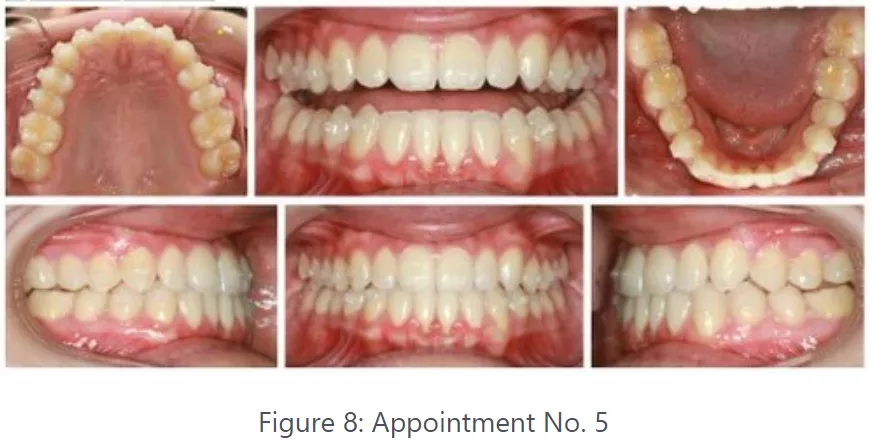
Appointment 7: The posterior occlusion fully seated, and the treatment objectives were achieved. The total treatment time was less than 12 months, utilizing 34 aligners. The patient was informed that if her bite became uncomfortable again, additional aligners could be used to add torque to U2-2.
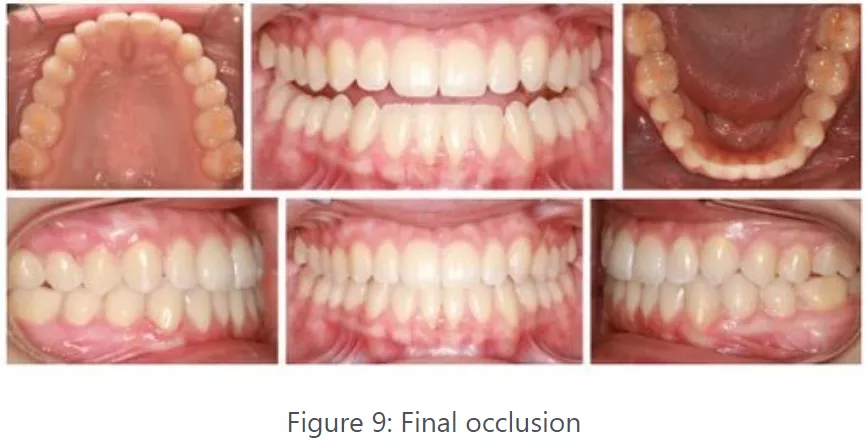
Summary and Conclusion
In this case study, efficient orthodontic treatment was successfully achieved with Spark Clear Aligners. A patient with a Class III malocclusion transitioned to a Class I functional occlusion and an esthetically pleasing smile in less than 12 months, requiring only seven appointments. This remarkable result was accomplished with minimal auxiliary mechanics.
One noteworthy aspect of this case was the use of lingual bite turbos with clear aligners—a method often applied with braces but not commonly associated with aligner treatment. This case demonstrates the feasibility of incorporating such mechanics with aligners and achieving results in a shorter timeframe.
As orthodontists aim to reduce treatment times, provide treatment in fewer appointments, cater to patient preferences, and enhance the overall patient experience, this case serves as a testament to what can be accomplished. It dispels the notion that clear aligners cannot move teeth as effectively as traditional fixed appliances. When planning is meticulous, patient education is thorough, and a versatile, customizable product like Spark Clear Aligners is available, the possibilities are limitless.
While I continue to utilize Damon™ brackets in my practice, I firmly believe that orthodontists should be proficient in treating patients effectively with both fixed and removable appliances. Clear aligners have proven their effectiveness and will continue to evolve into systems that yield predictable, reliable, and precise results. This case is just the beginning of what can be achieved with aligners, showcasing the transformative impact we can have on our patients' lives while delivering exceptional results and a remarkable experience.
